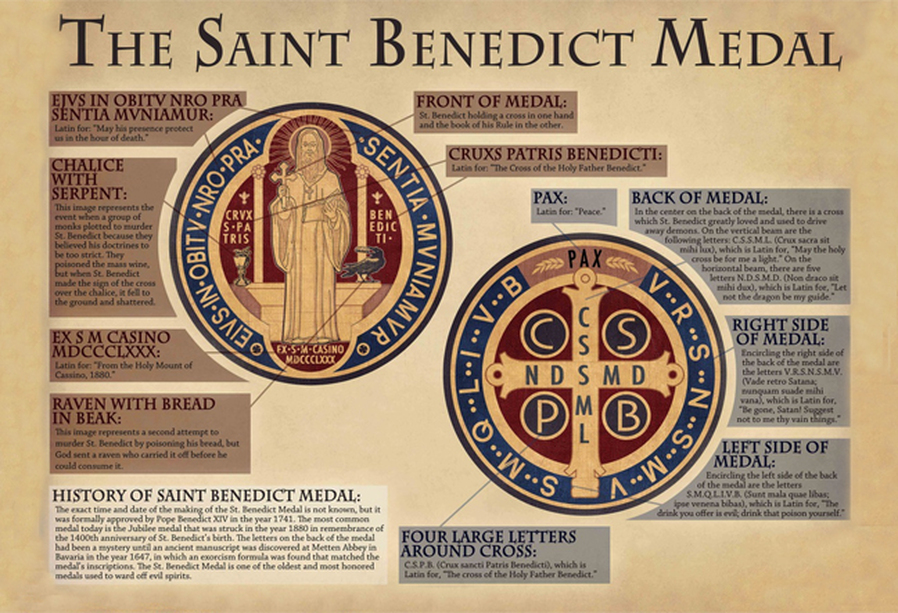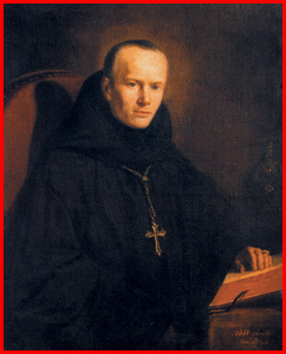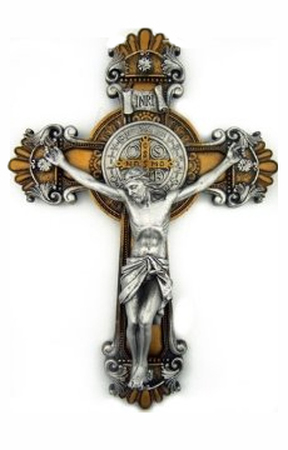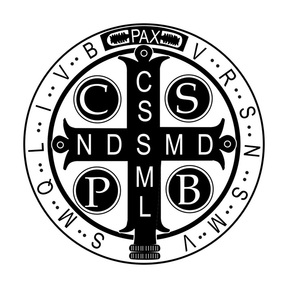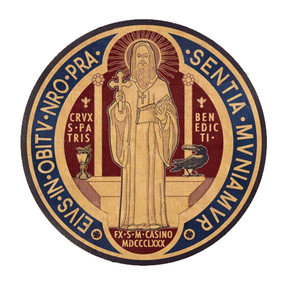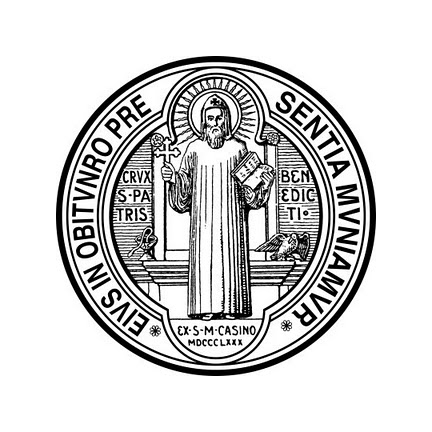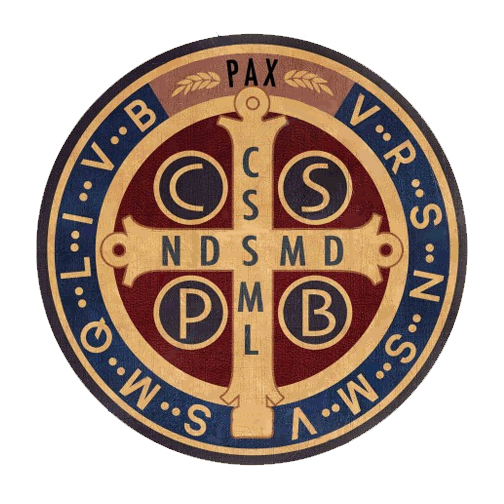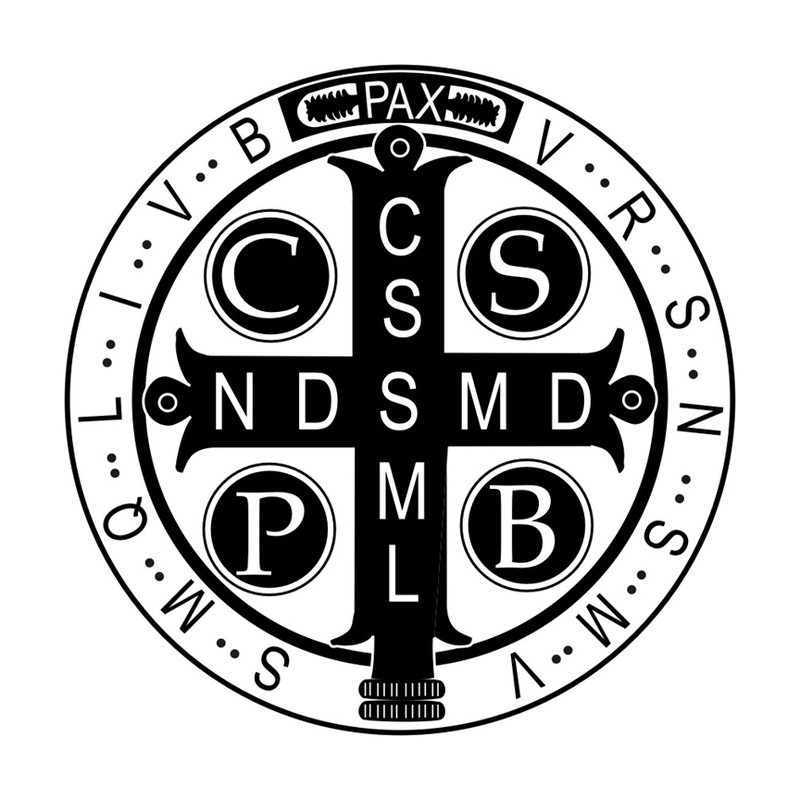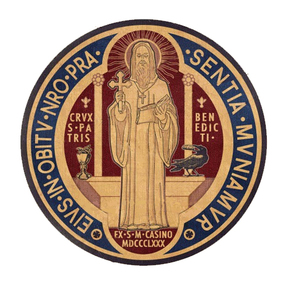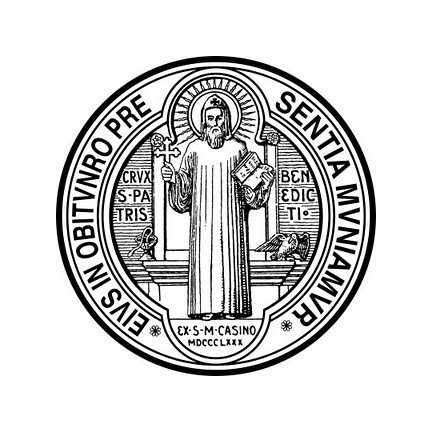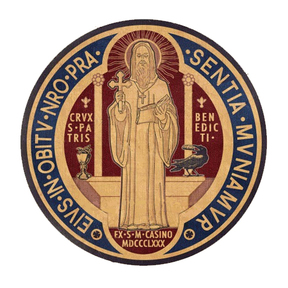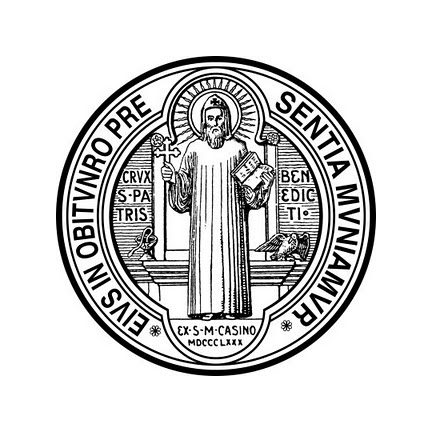| Devotion to Our Lady |
|
- Homepage
-
Daily Thoughts
- 2023 October Daily Thoughts
- Daily Thoughts Lent 2020
- Daily Thoughts for Advent 2019
- Daily Thoughts for October 2019
- Daily Thoughts for September 2019
- Daily Thoughts for August 2019
- Daily Thoughts for July
- Daily Thoughts for June
- Daily Thoughts for Easter 2019
- Daily Thoughts for Lent 2019
- Daily Thoughts for Christmas
- Daily Thoughts Easter 2022
- Sacred Heart
- Holy Ghost
-
Spiritual Life
- Holy Mass Explained
- First Friday Devotions
- First Saturday Devotions
- The Mercy of God
- Vocations
- The Path Everyone Must Walk >
- Gift of Failure
- Halloween or Hell-O-Ween?
- Ignatian Spiritual Exercises >
- Meditation is Soul-Saving
- Spiritual Communion
- Miraculous Medal
- Enrollment in Miraculous Medal
- St. Benedict Medal
- Holy Water
- Advice on Prayer
- Your Daily Mary
-
Prayers
- September Devotions
- Seven Sorrows of Our Lady
-
Novenas
>
- NV-Help of Christians
- NV-Nativity of Our Lady
- NV-Seven Sorrows
- NV- Sorrowful Heart
- NV-Pope St Pius X
- NV-La Salette
- NV-St Michael Archangel
- NV-Immaculate Heart
- NV-Assumption
- NV-Novena for Fathers
- NV-Novena for Your Mother
- NV-St Raphael Archangel
- NV-Souls in Purgatory
- NV-All Saints Day
- NV-Christ the King
- NV-Divine Motherhood
- NV-Guardian Angels
- NV-Rosary
- NV-Mirac Med
- NV- Imm Conc
- NV - Guadalupe
- NV - Nativity of Jesus
- NV-Epiphany
- NV-OL Good Success
- NV-Lourdes
- NV-St Patrick
- NV-St Joseph
- NV-Annunciation
- NV-St Louis de Montfort
- NV-OL Good Counsel
- NV-Last Supper
- NV-Passion
- NV-Pentecost
- NV-Ascension
- NV-Sacred Heart
- NV-Sacred Heart & Perpetual Help
- NV-Corpus Christi
- NV-OL of Perpetual Help
- NV-Queenship BVM
- NV-OL of Mount Carmel
- NV-St Mary Magdalen
- NV- Im Hrt
- August Devotions to IHM
- Immaculate Heart of Mary
- Litany of Dependence
- Prayers to St Mary Magdalen
- Prayers in Times of Sickness Disease & Danger
- Holy Souls in Purgatory
- Meditations on the Litany of Our Lady
- Special Feast Days
- Prayers to Mary (Mon-Sun)
- Litanies to Our Lady >
- Various & Special Needs
- Our Lady of the Rosary
- Our Lady of Mt. Carmel
- Our Lady of Perpetual Help
- Our Lady of Guadalupe
- Other titles of Our Lady
-
Rosary
- Downloads
- Consecration
- Easter Season
-
Holy Week
- Last Seven Words of Jesus >
- Characters of Passion >
- The Last Days of Christ
- Before Palm Sunday
- Palm Sunday
- Monday in Holy Week
- Tuesday in Holy Week
- Wednesday in Holy Week
- Holy Thursday (Last Supper)
- Holy Thursday (Agony & Arrest)
- Night Vigil with Christ
- Good Friday (Pilate & Herod)
- Good Friday (Way of Cross & Crucifixion)
- Saturday in Holy Week
-
Lent
- Ideas for Lent
- Daily Lenten Planner
- Daily Lenten Liturgy
- From Cold to Hot
- Lent with Aquinas
- Lent with Dom Gueranger
- Virtues for Lent
- History of Penance
- How Expensive is Sin?
- Confession of Sins
- Letter to Friends of the Cross
- Sermons for Lent
- Stations of the Cross >
- Lenten Prayers
- 7 Penitential Psalms
- Lenten Psalms SUN
- Lenten Psalms MON
- Lenten Psalms TUE
- Lenten Psalms WED
- Lenten Psalms THU
- Lenten Psalms FRI
- Lenten Psalms SAT
- Lenten Laughs
- Septuagesima
-
Christmas
- Epiphany Explained
- Suggestions for Christmas
- Food For Thought
- Christmas with Aquinas
- Christmas with Dom Gueranger
- Christmas Prayers
- Candles & Candlemas
- Christmas Sermons
- Christmas Prayers SUN
- Christmas Prayers MON
- Christmas Prayers TUE
- Christmas Prayers WED
- Christmas Prayers THU
- Christmas Prayers FRI
- Christmas Prayers SAT
- Twelve Days of Christmas >
-
Advent Journey
- Purgatory
- Christ the King
- Legion of Mary
- Scapular
-
Saints
-
Martyrs for the Faith
>
- Your Daily Martyr >
- All 365 Days of Martyrs
- Cristeros
- St Valentine & Valentine's Day
- Martyrs--Thomas Becket
- Martyrs--John the Apostle
- Holy Machabees
- Age of Martyrdom
- Carmelites of Compiegne
- Martyrs--Peter & Paul
- Martyrs--John the Baptist
- Martyrs--Andrew
- Martyrs--James the Great
- Martyrs--North American
- Martyrs--Seven Holy Sleepers
- Martyrs--Afra
- School of Martyrdom
- Martyrs--Christina
- Desert Saints >
- Saints for Sinners >
- Saints of Mary >
- History of All Saints Day
-
Martyrs for the Faith
>
- Precious Blood
- Synod 2023
-
Catechism
- Catechism Lesson 1
- Catechism Lesson 2
- Catechism Lesson 3
- Catechism Lesson 4
- Catechism Lesson 5
- Catechism Lesson 6
- Catechism Lesson 7
- Catechism Lesson 8
- Catechism Lesson 9
- Catechism Lesson 10
- Catechism Lesson 11
- Catechism Lesson 12
- Catechism Lesson 13
- Catechism Lesson 14
- Catechism Lesson 15
- Catechism Lesson 16
- Catechism Lesson 17
- Catechism Lesson 18
- Catechism Lesson 19
- Catechism Lesson 20
- Catechism Lesson 21
- Catechism Lesson 22
- Bible Study
-
Calendar
- Miracles
- Apparitions
- Shrines
- Prophecies
- Angels Homepage
- Hell
-
Church Crisis
- Conspiracy Theories
- Amazon Synod 2019 >
- Liberalism & Modernism
- Modernism--Encyclical Pascendi
- Modernism & Children
- Modernism--Documents
- The Francis Pages
- Church Enemies on Francis
- Francis Quotes
- Amoris Laetitia Critique
- Danger of Ignorance (Pius X)
- Restore all In Christ (Pius X)
- Catholic Action (Pius X)
- Another TITANIC Disaster?
- The "Errors of Russia"
- CRISIS PRAYERS
- Election Novena 2024
- The Anger Room
- War Zone
- Life of Mary
- Spiritual Gym
- Stupidity
- Coronavirus and Catholicism
- History & Facts
- Books
- Catholic Family
- Children
- Daily Quiz
-
Novena Church & Pope
- Day 01 Church-Pope Novena
- Day 02 Church-Pope Novena
- Day 03 Church-Pope Novena
- Day 04 Church-Pope Novena
- Day 05 Church-Pope Novena
- Day 06 Church-Pope Novena
- Day 07 Church-Pope Novena
- Day 08 Church-Pope Novena
- Day 09 Church-Pope Novena
- Day 10 Church-Pope Novena
- Day 11 Church-Pope Novena
- Day 12 Church-Pope Novena
- Day 13 Church-Pope Novena
- Day 14 Church-Pope Novena
- Day 15 Church-Pope Novena
- Day 16 Church-Pope Novena
- Day 17 Church-Pope Novena
- Day 18 Church-Pope Novena
- Day 19 Church-Pope Novena
- Day 20 Church-Pope Novena
- Day 21 Church-Pope Novena
- Day 22 Church-Pope Novena
- Day 23 Church-Pope Novena
- Day 24 Church-Pope Novena
- Day 25 Church-Pope Novena
- Day 26 Church-Pope Novena
- Day 27 Church-Pope Novena
- Day 28 Church-Pope Novena
- Day 29 Church-Pope Novena
- Day 30 Church-Pope Novena
- Day 31 Church-Pope Novena
- Day 32 Church-Pope Novena
- Day 33 Church-Pope Novena
- Day 34 Church-Pope Novena
- Day 35 Church-Pope Novena
- Day 36 Church-Pope Novena
- Day 37 Church-Pope Novena
- Day 38 Church-Pope Novena
- Day 39 Church-Pope Novena
- Day 40 Church-Pope Novena
- Day 41 Church-Pope Novena
- Day 42 Church-Pope Novena
- Day 43 Church-Pope Novena
- Day 44 Church-Pope Novena
- Day 45 Church-Pope Novena
- Day 46 Church-Pope Novena
- Day 47 Church-Pope Novena
- Day 48 Church-Pope Novena
- Day 49 Church-Pope Novena
- Day 50 Church-Pope Novena
- Day 51 Church-Pope Novena
- Day 52 Church-Pope Novena
- Day 53 Church-Pope Novena
- Day 54 Church-Pope Novena
- Penance Novena
- Daily WeAtheR Forecast
ST. BENEDICT MEDAL POSTER FOR DOWNLOAD
see below for more details
see below for more details
|
ST. BENEDICT MEDAL EXPLANATION POSTER
Alongside you will find the 11 inches by 17 inches poster explaining the symbolism on the St. Benedict Medal. Click on the PDF logo to download. ST. BENEDICT MEDAL EXPLANATION POSTER
Alongside you will find the 13 inches by 19 inches poster explaining the symbolism on the St. Benedict Medal. Click on the PDF logo to download. |
| ||||||||||||
THE HISTORY OF THE ST. BENEDICT MEDAL
by Dom Guéranger (1837-1875)
by Dom Guéranger (1837-1875)
|
Who better, than a Benedictine monk, is there to give us an explanation of the Medal of St. Benedict? And among Benedictines, who better than the renowned abbot of Solesmes, Dom Guéranger?
He has written a booklet that gives a very thorough and detailed account of the history and miracles of the Medal of St. Benedict, as well as an enlightening explanation of the all the letters and symbolism that can be seen on both sides of the Medal. The entire booklet runs to scores of pages, and we will share only the essentials in this brief article. Prosper Louis Pascal Guéranger, O.S.B. — commonly referred to as Dom Guéranger—was born on the 4th of April, 1805, Sablé-sur-Sarthe, France and died on the 30th of January, 1875, at the monastery of Solesmes, France. He was a French Benedictine monk and priest, who served for nearly 40 years as the Abbot of Solesmes Abbey—which he founded in the abandoned Priory of Solesmes. Through his efforts, he became the founder of the French Benedictine Congregation (now the Solesmes Congregation), which re-established monastic life in France after it had been wiped out by the French Revolution. Guéranger was the author of The Liturgical Year, which covers every day of the Catholic Church's Liturgical cycle in 15 volumes. He was well regarded by Pope Pius IX, and was a proponent of the dogmas of papal infallibility and the Immaculate Conception. Dom Guéranger is credited with reviving the Benedictine Order in France and is also regarded as the grandfather of the Liturgical Movement. The cause for his canonization is currently being studied by the Holy See, which has approved the title for him of Servant of God. From here on, we present solely the words of Dom Guéranger. PREFACE Man has no right to pass judgment on the effects which God deigns to produce by His power and goodness. In order to assist us in our necessities, God, in His wisdom and providence, sometimes makes use of extremely simple means, thus to keep us in humility and filial confidence. A Christian, whose faith is but weak, is surprised at this, and even tempted to be scandalized, inasmuch as it seems to him that the means by which God works, are not in keeping with His greatness. Such a thought as this is nothing less than pride or ignorance; for whenever God puts Himself within our reach, He must needs stoop down to our lowliness. And yet, does He not show His greatness when He selects simple material objects as the medium of communication between Himself and us, as in the case of the Holy Sacraments? Does He not thereby show us how He is the absolute Master of all, even so far as this—that He can embody His grace in such low and apparently commonplace forms as these? The Church, which is guided by His Spirit, delights in imitating this, His mode of acting, at least in some slight way, and hence she communicates the divine virtue, which she possesses, to those objects which she sanctifies as helps and consolations for her children. This little work treats upon one of these sacred objects; one which is honored by the protection and by the blessing of the Church, and which unites in itself the triumphant power of the Holy Cross, which redeemed us, with the memory of one of God’s most illustrious servants. Every Christian that loves and adores Jesus Who redeemed us—or who believes in the intercession of the Saints, who are now reigning in Heaven with him — will look on the Medal of St. Benedict with respect, and, when he hears of any of those heavenly favors, of which it has been the instrument, he will give thanks to God, Who authorizes us to make use of His Son’s Cross as a shield of protection, and to rely with confidence on the assistance of the Saints in Heaven. Our only object is to render a service to our brethren in the Faith. During life, they will be placed in circumstances when they will feel that they need a special help from Heaven—let them, at these times, have recourse to the Medal of St. Benedict, as so many Christians have the habit of doing; and if their Faith be strong and simple, they may depend on the promise of Our Lord—such faith shall not go unrewarded. I. ON THE IMAGE OF THE CROSS REPRESENTED ON THE MEDAL There is a great wish on the part of many Catholics to have clear ideas regarding the celebrated Medal, which goes under the name of the great Patriarch of the Western Monks—the St. Benedict Medal. It is true that several notices have been already published, some more, some less correct; but not one of them, so it seems to us, having fully satisfied the wishes of the faithful, we thought it would be well to offer to their devotion a more complete explanation of an object which has become so dear to them. That there may be order in what we are going to say about it, we will begin with a description of the Medal. A Christian needs only to reflect for a moment on the sovereign virtue of the Cross of Jesus Christ, in order to understand how worthy of respect a Medal is, on which it is represented. The Cross was the instrument of the world’s redemption; it is the saving tree, whereon was expiated the sin committed by man when he ate the fruit of the forbidden tree. St. Paul tells us that the sentence of our condemnation was fastened to the Cross, and blotted out by the Blood of our Redeemer. In a word, the Cross, which the Church salutes as our only hope, “Spes Unica,” is to appear at the last day in the clouds of Heaven, as the trophy of tine victory of the Man-God. The image of the Cross excites in our minds the liveliest sentiments of gratitude, towards God, for the benefit of our salvation. After the Blessed Sacrament, there is nothing on earth so deserving our respect as the Cross; and it is for this reason that we pay it a worship of adoration, which is referred to God, Whose precious Blood was spilt upon it. Animated by sentiments of the purest religion, the primitive Christians had, from the very beginning of the Church, the profoundest veneration for the image of the Cross, and the Fathers seem never to tire in the praises they give to this august image. When, after three hundred years of persecution, God had decreed to give peace to His Church, there appeared, in the heavens, a Cross, on which were these words, “In this sign shalt thou conquer;” and the Emperor Constantine, to whom this vision was granted, promising him victory over his enemies, would have his army go henceforth to battle, under a standard bearing the image of the Cross, with the monogram of the word “Christ.” This standard was called the Labarum. The Cross is an object of terror to the wicked spirits; they cannot endure its presence; they no sooner see it, than the let go their prey and take to flight. In a word, of such importance to Christians is the Cross and the blessing it brings along with it, that, from the times of the Apostles down to our own age, the faithful have ever been accustomed to make the sign of the Cross frequently upon themselves, and the Priests of the Church have constantly used it upon all the objects, which in virtue of their sacerdotal character, they have the power to bless and sanctify. Our Medal, therefore, which firstly offers to us this image of the Cross, is in strict accordance with Christian piety, and worthy, even were there no other motive than this, of all possible veneration. II. OF THE IMAGE OF ST. BENEDICT REPRESENTED ON THE MEDAL The honor of appearing, on the same medal with the image of the Holy Cross, has been given to St. Benedict with the intention of expressing the efficacy which this holy Sign had, when made by his venerable hand. St. Gregory the Great, who has written the Life of the Holy Patriarch Benedict, tells us how, by the Sign of the Cross, he overcame his temptations, and broke the cup of poisoned drink which was offered to him, thus unmasking the wicked design of those who had plotted to take away his life. When the Evil Spirit, in order to terrify his Religious, made the Monastery of Monte Cassino appear to be on fire, St. Benedict immediately dispels the artifice, by making over the fiery phantom this same Sign of our Redeemer’s Passion. When his Religious are troubled interiorly with the suggestions of the tempter, the Holy Father bids them take the remedy, and it is to make on their breasts the Sign of the Cross. In his Rule, he prescribes that the Brother, who has been reading the solemn engagement of his profession, at the foot of the altar, should immediately affix to it the Sign of the Cross, as an irrevocable seal of the deed on which his vows are written. The disciples of St. Benedict have had a like confidence in this sacred Sign, and have worked innumerable miracles by it. Let it here suffice to mention St. Maurus giving sight to a blind man, St. Placid curing many who were sick, St. Richmir liberating captives, St. Wulstan preserving a work man in the very act of falling from the top of the Church-tower, St. Odilo drawing out from a man’s eye a splinter of wood, which had run through it; St. Anselm of Canterbury driving away from an old man the horrid specters which were tormenting him in his dying moments; St. Hugh of Cluny quelling a storm; St. Gregory the Seventh arresting the conflagration at Rome, etc.—these, and a thousand other such miracles, which are related in the Acts of the Saints of the Order of St. Benedict, were all worked by the Sign of the Cross. The glory and efficacy, of the august instrument of our salvation, have been celebrated with enthusiasm by the children of the great Patriarch Benedict; they loved to extol it, for their hearts were full of gratitude towards it. Not to speak of the Little Office of the Holy Cross, which St. Udalric, Bishop of Augsburg, used to recite, and which was also said in choir in the abbeys of St. Gall, of Reichenau, of Bursfeld, etc.; the Blessed Rhabanus Maurus and St. Peter Damian consecrated their talent for Poetry in singing the praises of the Holy Cross; St. Anselm of Canterbury has written its praises in the form of most exquisite prayers; Venerable Bede, St. Odilo of Cluny, Rupert of Deutz, Ecbert of Schonaugen, and a long list of others of the Order, have left us Sermons on the Holy Cross; Eginhard wrote a Book in defence of the worship paid to it against the Iconoclasts, and Peter the Venerable defended, a set Treatise, the use of the Sign of the Cross which had been at tacked by the Petrobrusians. A great number of the most famous Monasteries of St. Benedict of the Order of St. Benedict were founded under the title of “Holy Cross.” Of these, let it suffice to mention the celebrated Monastery, built at Paris by the Bishop, St. Germanus; the Monastery built by St. Faron in the diocese of Meaux; the Abbey of “Holy Cross” founded at Poitiers by St. Radegonde; the Monastery of “Holy Cross” at Bordeaux, built by Clovis the Second; those of Metten in Bavaria, Reichenau in Switzerland, Quimperlé in Brittany, and the five famous Monasteries in the Vosgian country, which were founded by St. Hydulph, and which he so situated that they formed a Cross. The Savior of the world seems to have entrusted, by a special favor, to the children of St. Benedict a large portion of the Cross on which He died for the redemption of man. Large fragments of this sacred wood have been confided to their keeping, and a Christian might almost glory in having seen the Instrument of his salvation, were all the pieces to be put before him, which have been possessed by different Monasteries of this Order. We may mention the following amongst the Houses thus privileged: in France, St. Germain-des-Prés, in Paris; St. Denis; Holy Cross at Poitiers; Cormery, in the Touraine; Gellone. etc.; St. Michael de Murano, in Venice; Sahagun, in Spain; Reichenau, in Switzerland; St. Ulric and St. Afra at Augsburg in Germany; St. Michael, at Hildesheim; St. Trutpert in the Black Forest; Moelk, in Austria; the celebrated Monastery of Gandesheim, etc. But the most glorious mission given to the Benedictines, in what relates to the glory of the Holy Cross, is that of having carried this instrument of salvation into so many countries, by preaching the Gospel to their pagan inhabitants. The greater part of the West was converted by their zeal from the darkness of infidelity, and the reader need scarce be told that England was converted by St. Augustine of Canterbury, Germany by St. Boniface, Belgium by St. Amandus, Holland and Zealand by St. Willibrord, Westphalia by St. Swithbert, Saxony by St. Ludgerius, Bavaria by St. Corbinian, Sweden and Denmark by St. Anscharius, Austria by St. Wolfgang, Poland and Bohemia by St. Adalbert of Prague, Prussia by St. Otho of Bamberg, Russia by St. Boniface the Second. Such are in brief the facts which give to the person and name of St. Benedict a special connection with the Holy Cross; it is, therefore, with a most evident appropriateness that the Figure of this Holy Patriarch has been put on the same Medal with the Image of the Cross of our Lord Jesus Christ. We see still more clearly why this should have been done, when we refer to what is related in the Acts of the two great disciples of this Servant of God, St. Placid and St. Maurus. Both of them, when working the miracles which we meet in almost every page of their lives, were wont to join with the invocation of the help of the Holy Cross the name of their holy Father Benedict, thus establishing, at the very beginning of the Order, the pious practice, of which the Medal was to be, in after times, the symbol and the expression. St. Placid had scarce hade farewell to I he Holy Patriarch when leaving Monte Cassino to repair to Sicily, than arriving at Capua he was besought to heal the superior of the Church of the town. His humility made him for a long time resist such a demand; till at length he consents, and placing his hand upon the head of the Priest who was sick of a mortal disease, he immediately cures him, whilst pronouncing these words: “In the Name of our Lord Jesus Christ, Who, by the prayers and virtue of Benedict our Master, drew me safe from the midst of the water, may God reward thy Faith and restore thee to thy former health.” Immediately there comes a blind man, begging now to have his turn and be cured. Placid makes the Sign of the Cross upon his eyes, at the same time adding this prayer: “Lord Jesus Christ, Mediator of God and men, Who didst come down from Heaven to earth that Thou mightest enlighten those who were sitting in the darkness and shades of death; Thou Who hast given to our blessed Master Benedict the gift of healing all maladies and all wounds, deign, by his merits, to give sight to this blind man, to the end that, seeing the magnificence of Thy works, he may fear and adore Thee as the Sovereign Lord.” Then addressing himself to the blind man, Placid thus continued: “By the merits of our most Holy Father Benedict, I command thee in the Name of Him Who created the sun and moon to be the ornament of the heavens, and gave to him who was born blind the eyes which nature had denied him, arise, and be thou healed! Go now and tell all men the wonderful works of our God.” The blind man immediately recovered his sight. We might quote several other miracles from the Life of St. Placid, such as healing the sick, or driving out devils from those possessed, in which the invocation or the mention of St. Benedict, still living, was united with the making of the Sign of the Cross. In some of these miracles, we find the sick themselves acknowledging and proclaiming this mysterious connection. St. Maurus, having been sent by the great Patriarch into Gaul, there to establish his rule, soon began to work numerous miracles. As we noticed before, these miracles were wrought by means of the Holy Cross, and the saintly Abbot was also accustomed to join to the divine virtue of the instrument of our redemption, a prayer invoking the intervention of St. Benedict. He bore testimony to this himself, when on occasion of his having saved one of his fellow travelers from death, he made this declaration: “If,” said the Saint to those who had witnessed the miracle, “the Divine Majesty hath deigned to work this miracle by the wood which redeemed us, it is plainly not to man, but to the Redeemer Himself that we must give the glory of it, although none of you can doubt but that the merits of our most holy Father Benedict have obtained this grace of Him for us.” From these facts it is evident that even from the very commencement of the Benedictine Order, this method of having recourse to the divine goodness was practiced with wonderful success. St. Benedict was still on earth, and his disciples invoked his name when they were asking favors of Heaven; if such confidence in his merits was even then thus blessed by God, how great must the power of his intercession be now, that he has been raised to his throne of glory in Heaven. III. OF THE LETTERS, WHICH ARE INSCRIBED ON THE MEDAL Besides the two Images of the Cross and—St. Benedict, there are also inscribed on the Medal a certain number of Letters, each of which is the initial of a Latin word. These words compose one or two sentences, which explain the Medal and its object. They express the relation existing between the Holy Patriarch of the Monks of the West and the sacred sign of the Salvation of mankind, at the same time that they offer the faithful a formula, which they may make use of, for employing the virtue of the Holy Cross against the evil spirits. Those mysterious letters are arranged on that side of the medal on which is the Cross. Let us begin by noticing the four which are placed near the Cross, one at each of the outward corners: C S P B that is: Crux Sancti Patris Benedicti; in English: “The Cross of Holy Father Benedict.” These words explain the nature of the Medal. On the perpendicular line of the Cross itself, are these letters: C S S M L they stand for these words : CRUX SANCTA SIT MIHI LUX; in English: “May the Holy Cross be my Light.” On the horizontal line of the Cross are these letters: N. D. St. M. D. the words which they imply are: NON DRACO SIT MIHI DUX; in English: “Let not the Dragon be my guide.” These two lines put together forum a pentametre verse, containing the Christian's protestation that he confides in the Holy Cross, and refuses to bear the yoke which the devil would limit upon him. On the rim of the Medal there are inscribed several other Letters; and first the well-known Monogram of the holy name of Jesus, IH St. Faith and our own experience convince us of the all-powerfulness of this divine Name. Then below, beginning at the right hand, the following letters: V. R. St. N. St. M. V. St. M. Q. L. I. V. B. These initials stand for the two following verses. VADE RETRO, SATANA; NUNQUAM SUADE MIHI VANA. SUNT MALA QUAE LIBAS; IPSE VENENA BIBAS. in English: “Begone, Satan! And suggest not to me thy vain things; the Cup thou profferest me is evil; drink thou thy poison.” These words are supposed to be said by St. Benedict; those of the first verse when he was suffering the temptation in his cave, and which he overcame by the Sign of the Cross; and those of the second verse, at the moment of his enemies offering to him the draught of death, which he discovered by his making over the poisoned cup the Sign of Life. The Christian may make use of these same words as often as he finds himself tormented by temptations and insults of the invisible enemy of our salvation. Our Savior sanctified the first of these words, by himself making use of them “Begone, Satan!” Vade retro, Satana. Their efficacy has thus been tested, and the very Gospel is the guarantee of their power. The vain things, to which the devil incites us are disobedience to the law of God; they are also the pomps and false maxims of the world. The cup proffered us by this angel of darkness is evil, that is sin, which brings death to the soul: instead of receiving it at his hands, we ought to bid him keep it to himself, for it is the inheritance which he chose for himself. The Christian who reads these pages needs not that we should enter into a long explanation of this formula, which meets the artifices and violence of Satan with what he most dreads; namely, the Cross, the Holy Name of Jesus, our Savior’s own words in his temptation, and lastly the mention of the victories which the great Patriarch St. Benedict gained over the infernal dragon. We need only pronounce these words of the Medal with faith, and we shall immediately feel ourselves strengthened and encouraged to resist all that Hell can do against it; us; even did we know none of the countless facts which show us how strangely Satan fears this Medal, the mere knowledge of what it means and what it expresses would be sufficient to make us look upon it as one of the most powerful arms which the goodness of God has put into our hands against the malice of the devils. |
Web Hosting by Just Host

